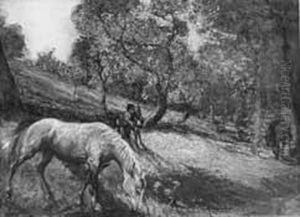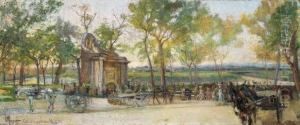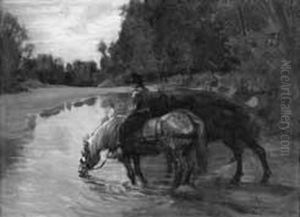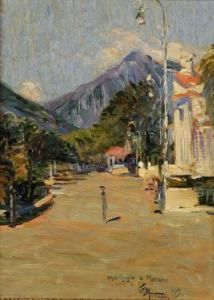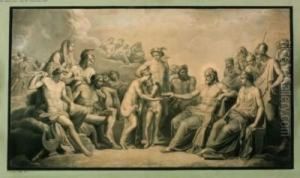Paolo Emilio, Morgari Jnr. Paintings
Paolo Emilio Morgari, also known as Paolo Emilio Morgari Junior, was an Italian painter born on July 28, 1859, in Turin, Italy. He came from an artistic family; he was the son of the painter Rodolfo Morgari and his uncle was Luigi Morgari, both of whom were well-known figures in the Italian art scene of the time. Paolo Emilio was exposed to the world of art from a young age, and this environment undoubtedly influenced his decision to pursue a career in the same field.
Morgari received his initial training from his father and uncle, and he furthered his studies at the Accademia Albertina in Turin, which was one of the most prestigious art schools in Italy at the time. His work primarily consisted of historical and religious paintings, and he was influenced by the Romantic style, which was prevalent during the 19th century. This style often emphasized emotion and individualism, which can be seen in the dramatic scenes and the elaborate character expressions found in his paintings.
His oeuvre includes frescoes and altarpieces in various churches and public buildings throughout Italy. Notably, he painted the ceiling of the Teatro Regio in Turin, which demonstrated his skill in creating large-scale works. Morgari was also known for his portraits, which were marked by a keen attention to detail and a strong sense of character.
Throughout his career, Paolo Emilio Morgari participated in numerous exhibitions and received accolades for his work. He became a respected figure within the local art community in Turin and contributed to the cultural life of the city.
Morgari's art was part of the larger 19th-century Italian tradition that saw a revival of interest in historical and religious subjects, in part as a response to the changing political and social conditions of the time. His paintings are characterized by their rich color palette, meticulous compositions, and a blend of realism with idealized beauty.
Paolo Emilio Morgari Junior passed away on November 16, 1935. Although perhaps not as widely recognized internationally as some of his contemporaries, Morgari's work remains an important part of the artistic heritage of Italy, particularly within the context of Turin's art history. His legacy is preserved in the form of his artworks that continue to be displayed in churches, museums, and galleries, attesting to his skill and dedication to his craft.
